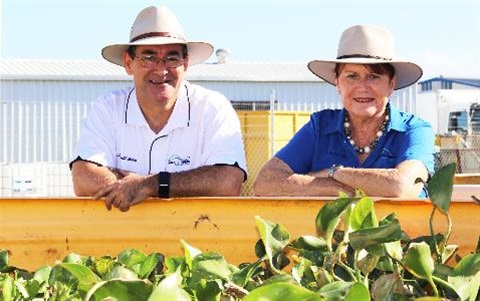Council using bugs to get rid of pests
Published on 09 April 2018

Rockhampton Regional Council has been utilising insect farms to help manage some of the plants that can ruin our waterways, and hopes to be able to share their success with private landowners soon.
Three plant species in particular - Water Hyacinth, Salvinia, and Water Lettuce - pose real problems for our Region by damaging native ecosystems and affecting water flow. They are all restricted invasive plants under the Biosecurity Act 2014.
Council has been using certain species of weevils to combat the growth of these plants.
Councillor Ellen Smith, Chair of Council’s Planning and Regulatory Committee, said the weevil farming programme was showing real signs of success.
“It really is remarkable when you see them at work in the bio tanks and out in the rivers, and what a difference it makes to restricting the growth of the flora,” Cr Smith said.
“Although some of these plants are quite pretty – indeed some were introduced specifically for ornamental purposes – they can cause havoc in our waterways so it’s very important that we do all we can to minimise their impact.
“Council has been utilising this method for a couple of years now, and we are working towards being able to share the technique with private landowners.”
Environment spokesperson, Councillor Drew Wickerson, said the process had a wider positive effect.
“Not only are we reducing the environmental damage caused by some of these plants, but using the weevils also means our other methods of controlling growth – including chemical based pesticides – are greatly reduced,” Cr Wickerson said.
“The adult weevil gets in and eats the leaves of the plants, but most effectively is that they also lay their larvae in the stem. The larvae then cause the stem to rot and the plant is unable to reproduce.”
Further details on the Water Hyacinth, Salvinia, and Water Lettuce:
Water hyacinth is a major pest of creeks, rivers and dams. It chokes wetlands and waterways, impacting native wildlife and interfering with recreational use.
Water lettuce rapidly forms dense infestations that cover the surface of entire rivers, dams and irrigation channels. It affects water flow, damages native ecosystems, and impedes recreational use of water bodies.
Salvinia forms thick mats that can quickly cover water bodies. Infestations reduce water flow, degrade water quality, and affect native animals, stock, and recreational users.